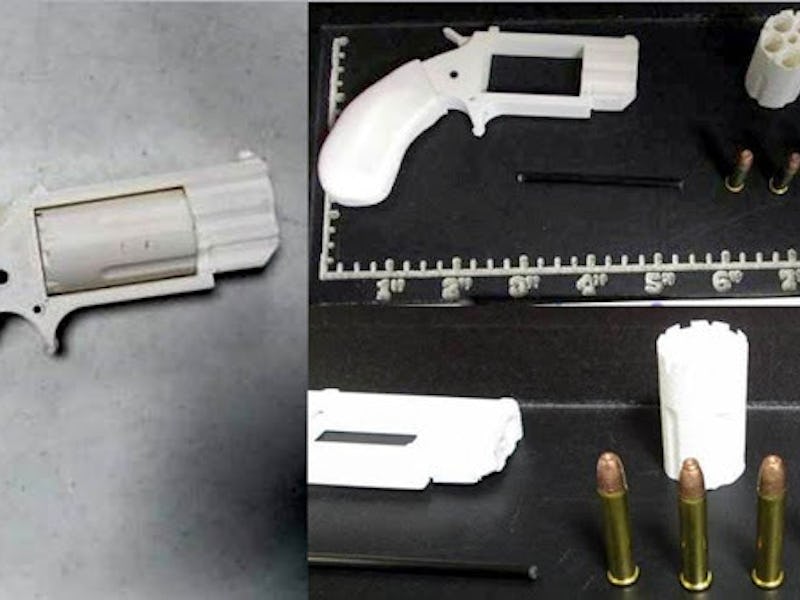3D Printed Gun Designs Are Getting a Relaxed New Approach from Regulators
This seems fine.

Starting next month, you’ll likely have an easier time finding and downloading the schematics one would need to 3D print a functioning firearm.
That’s thanks to a recent Justice Department settlement with a crusader named Cody Wilson, who since 2015 has been battling regulators and government attorneys over his right to publish the 3D-printed gun CAD files online through an open source platform. It’s an unexpected twist in a long legal battle that seemed all but over after the Supreme Court refused to hear the case back in January. Josh Blackman, one of Wilson’s attorneys told Inverse that preventing Wilson from publishing the designs was a free speech issue.
“The argument is that they have a first amendment right to speech, and the government was telling Cody he couldn’t put these files on the internet,” Blackman explained. “The State Department used to regulate this kind of technical data, but the government shifted that to the Commerce Department which is a much more lenient approach … Cody was the only one subject to this old regime.”
Defense Distributed will begin republishing the software code to 3D print firearms starting on August 1.
It does seem fair to point out that it isn’t particularly difficult for someone who wants to find these designs to get them, torrent files have been available pretty much since Wilson first posted them.
But gun control activists like Adam Skaggs, chief counsel at the Giffords Law Center to Prevent Gun Violence, tells Inverse the decision will make it easier for people who can’t buy guns legally to 3D print their own. They also worry that the more widely available these schematics are, the more likely it is law enforcement officials will encounter more untraceable guns without serial numbers.
“What we see again and again is that people who aren’t legally allowed to have guns — they go into a gun store and fail a background check — they’re just going to turn around and go online,” Skaggs explained. “And with the click of a mouse, they’ll get the info and materials to build their own, that’s exactly what they’re going to do.”
Fortunately, the technology for manufacturing 3D printed guns isn’t terribly effective yet, and 3D printers can also be expensive. But the problem may have more to do with what tomorrow’s criminals are able to do with Wilson’s designs as opposed to what will happen when the software files go back online later this summer.
“When you make it that easy to buy guns where you don’t have to pass a background check, they don’t have registered serial numbers … that presents a huge range of problems,” Skaggs said. “Criminal enterprises that face challenges in legally acquiring guns are just going to start avoiding gun stores entirely and just building their own.”